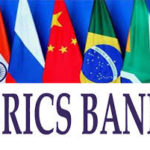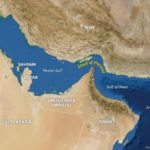How an India-Vietnam axis is emerging in the Indo-Pacific
Defence Minister Rajnath Singh’s visit also marked one more instance of India’s assertive foreign policy in the making. Prime Minister Narendra Modi’s last eight years have seen New Delhi becoming increasingly firm in pushing its own line and withstanding pressures from friends and foes alike.

By Swaran Singh
Indian Defense Minister Rajnath Singh recently concluded a three-day visit to Hanoi. This not only reinforced but showcased how, other than the Quadrilateral Security Framework of Australia, Japan, India and the United States, Vietnam has come to be the most powerful pillar of India’s Indo-Pacific strategy.
This rapidly strengthening bilateral partnership portends far-reaching implications for the larger Indo-Pacific region.
Singh’s visit also marked one more instance of India’s assertive foreign policy in the making. Prime Minister Narendra Modi’s last eight years have seen New Delhi becoming increasingly firm in pushing its own line and withstanding pressures from friends and foes alike.
And observers in Vietnam see this change being most aptly appreciated in Hanoi, undergirding an enduring future for their strategic cooperation.
For these last eight years, for instance, bilateral India-Vietnam trade has more than doubled, rising from US$7 billon for the 2015-16 fiscal year to $14.14 billion for 2021-22, with India’s exports to Vietnam last year marking impressive 34% growth over the preceding year.
But what has brought India and Vietnam closer is also their increasing concerns about China’s expanding footprint in the South China Sea, where both have serious commercial and strategic interests. And here, the recent past has especially witnessed China being further emboldened by its expanding engagements with the larger littoral across the Indo-Pacific region.
Apart from building known naval facilities from Djibouti in Africa to Solomon Islands in the Pacific, and leasing the ports of Gwadar and Hambantota or exploring naval access to ports in Bangladesh and Myanmar in South Asia, China has been secretly building naval facilities in Vietnam’s neighbor Cambodia, though officials both in Beijing and Phnom Penh have denied it.
This is where New Delhi and Hanoi find their larger visions – like the ASEAN Outlook on the Indo-Pacific and India’s Act East policy or Indo-Pacific Ocean’s Initiative – synergizing their rapidly transforming defense-centric partnership that promises to make this novel axis an influential factor in emerging Indo-Pacific dynamics.
Defense-centric axis
In short, India’s relationship with Vietnam has transformed from their millennia-old civilizational and cultural linkages and 20th-century camaraderie of anti-colonial struggles to the 21st-century geopolitics prodding a whole range of robust defense-centric partnerships.
Today these partnerships involve a whole spectrum of regular high-level visits, military training and exchanges, joint naval exercises, defense supplies and co-production, intelligence sharing and cooperation in UN peace operations.
The fact that their partnerships have lately begun to drift toward greater maritime and multilateral bonhomie makes their axis an interesting ingredient for prognosis on the evolving realignments in the Indo-Pacific region.
Recent years have witnessed India’s arms exports leading this transformation. No other nation has received the kind of defense supplies that have been destined from India to Hanoi.
In this three-day visit itself, India’s defense minister formally handed over 12 high-speed boats for Vietnam’s border guards. Underlining the move from defense exports to joint defense production, the first five boats were built in the Larsen & Toubro shipyard in India and the other seven at Vietnam’s Hong Ha shipyard.









